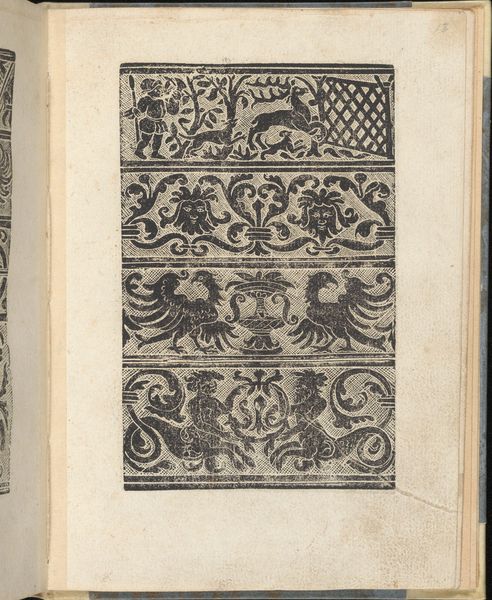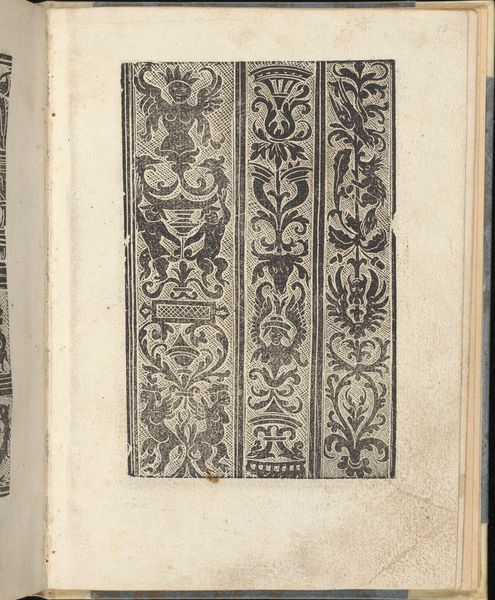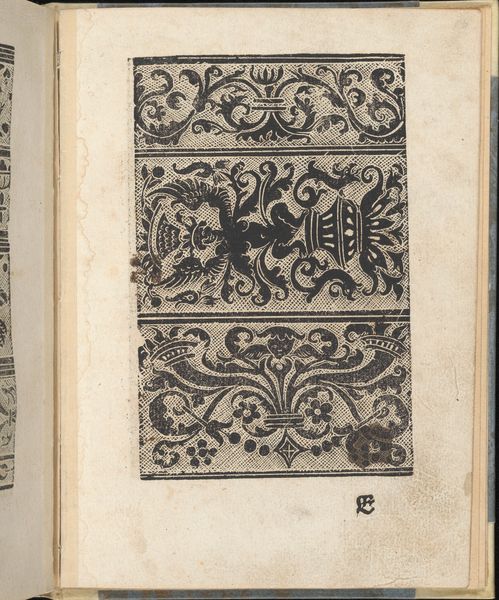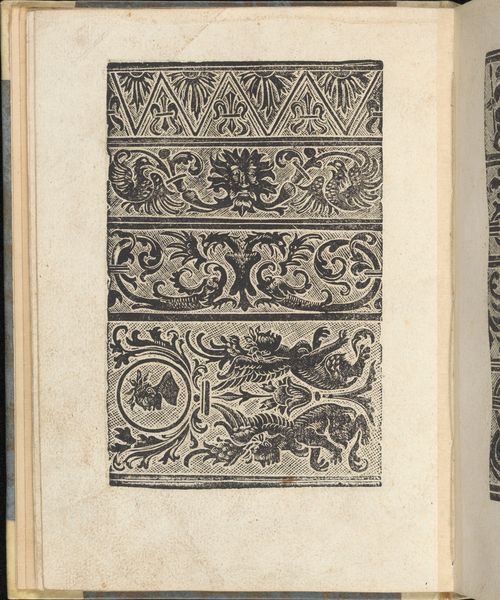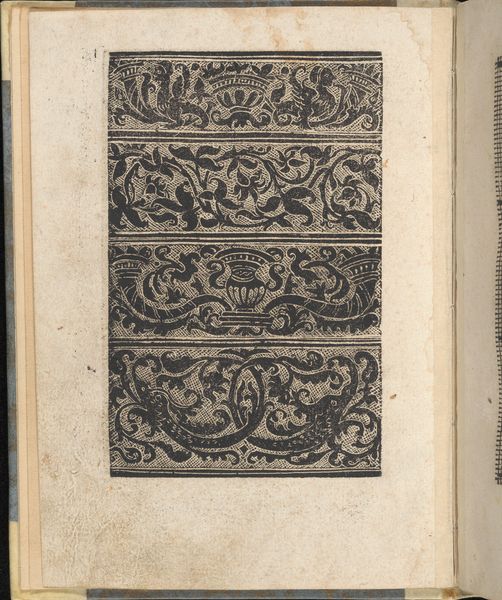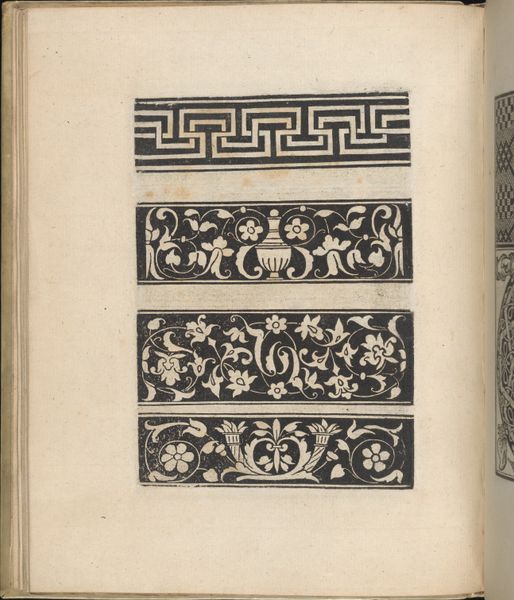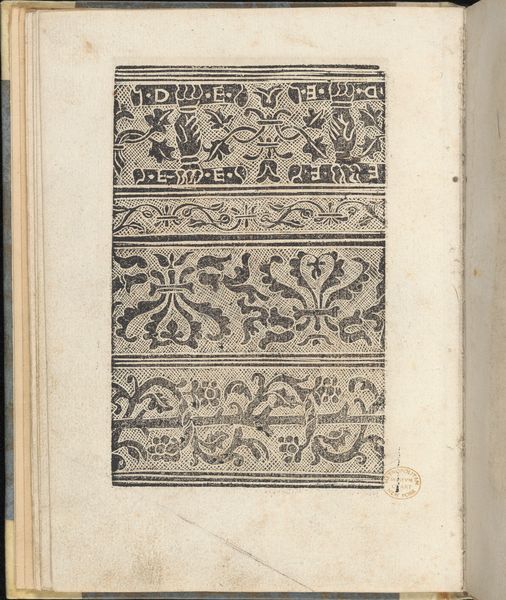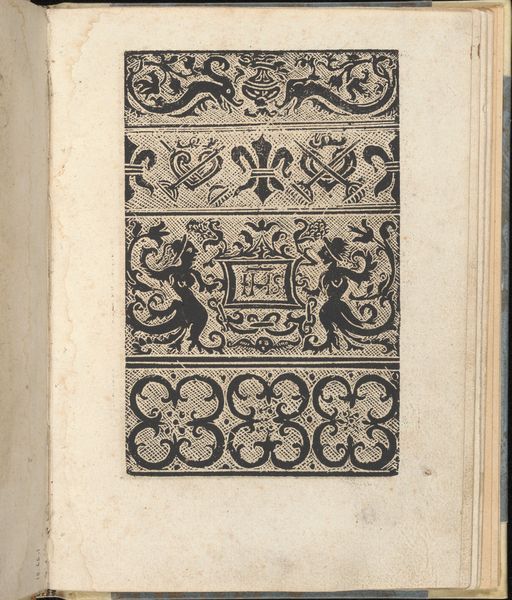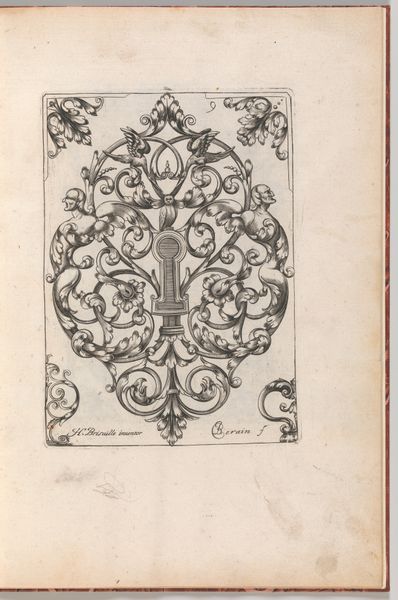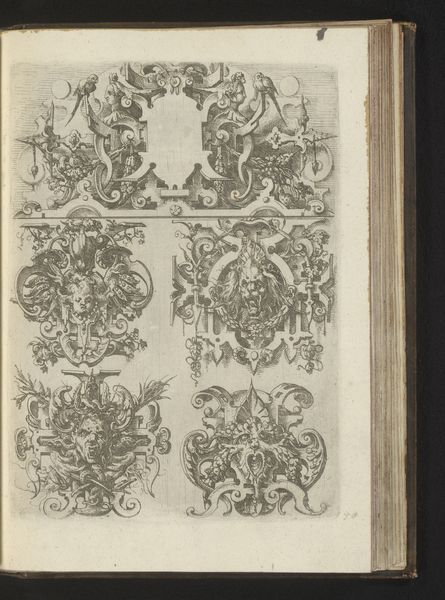
Ein ney Furmbüchlein, Page 13, verso 1520 - 1530
0:00
0:00
drawing, graphic-art, print, woodcut
#
drawing
#
graphic-art
#
medieval
# print
#
woodcut
Dimensions: 7 7/8 x 6 1/8 in. (20 x 15.5 cm)
Copyright: Public Domain
Editor: So this is "Ein ney Furmbüchlein, Page 13, verso" by Johann Schönsperger the Younger, a woodcut print from around the 1520s. The intricate borders remind me of illuminated manuscripts, but they're so strange and captivating! What strikes you about it? Curator: What I find particularly compelling is the function this "form book" served. Consider its audience: primarily artisans and craftspeople seeking patterns for their work. This wasn’t art for a wealthy patron's private enjoyment, but a resource for public creativity and commerce. What do you notice about the motifs? Editor: I see lots of mythical creatures - sphinxes, figures with crowns - almost like characters in a play. They must have held symbolic importance back then. Curator: Absolutely! The visual language speaks to the cultural context of the early 16th century. Think about the rise of the printing press and how it democratized access to information and imagery. This book provided a shared visual vocabulary for artists across different workshops, and thus facilitated standardization and broad consumption. Editor: So it wasn’t just about art, but about the beginnings of mass production? Curator: Precisely! The motifs selected and reproduced played a crucial role in shaping popular taste and disseminating symbolic meaning within the culture. Look at the level of detail achievable with a woodcut. What does that tell us? Editor: I guess that even though they could now make lots of these, they still really valued skilled artistry? It shows how valued printmaking must have become in spreading design. Curator: Indeed. This object is fascinating, isn't it, when considered through its purpose: as a kind of pre-industrial design catalogue. I look at it in terms of not simply aesthetic pleasure but the way in which it reshaped the socio-economic landscape of art production. Editor: That’s a perspective shift I really needed. It’s more than pretty pictures; it's about accessibility and the democratization of design! Thanks!
Comments
No comments
Be the first to comment and join the conversation on the ultimate creative platform.
